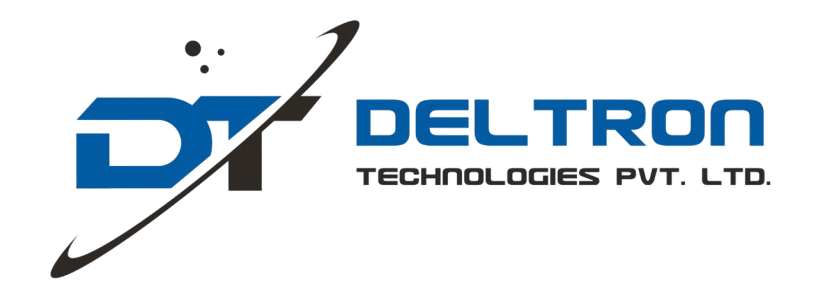
Web development is a crucial task of creating reliable, high-functioning, scalable web applications. This is not an easy task. However, to simplify the process whilst maintaining the quality of a web application, web development tools are used. For Developers, it’s not enough to just know coding languages. There are many other functional tools as well to streamline the whole web development process efficiently.
These tools are used for different purposes like creating, testing, streamlining, debugging, maintaining websites and applications and more. With the use of tools, the workflow becomes manageable and measurable.
In this article, we’ll explore some of the most popular Web Development Tools for beginners, and why you should use them in your projects.
1. Sublime Text
Sublime Text is a popular text editor specifically designed with developers in mind. Unlike basic text editors like Notepad, it offers a range of features that make coding more efficient and enjoyable for developers.
Sublime Text empowers developers with features that enhance their coding experience by boosting efficiency, readability, and customization options. It’s a powerful tool that can significantly streamline the development workflow.
2. Bootstrap
Bootstrap is a free and open-source front-end web development framework. It’s essentially a giant toolbox filled with pre-written code snippets and design templates that developers can leverage to build websites faster and easier.
Bootstrap acts as a time-saving and efficient foundation for building modern websites. It empowers developers to focus on the creative aspects of web development while ensuring their websites are responsive, user-friendly, and visually appealing across all devices.
3. Atom
Atom, once a popular choice, is a free and open-source text editor built specifically for programmers. While its development has slowed in recent years, it’s still used by some developers and offers features that can enhance the coding experience.
Atom is known for its high level of customization. Developers can change the look and feel of the editor’s interface through themes and modify its functionality through packages. These packages are essentially plugins that add new features, ranging from enhanced syntax highlighting for specific programming languages to linters that check code for errors, version control integration, and more.
4. Chrome Developer Tool
Chrome Developer Tools, also known as Chrome DevTools, is a comprehensive set of built-in tools directly integrated into the Google Chrome web browser.
Developers can directly inspect and modify the HTML, CSS, and JavaScript code that makes up a web page. This allows them to see how changes they make instantly affect the page’s appearance and functionality. Troubleshooting errors and bugs in web pages becomes a breeze. DevTools helps pinpoint the exact location of issues within the code, saving developers time and frustration.
5. Github
GitHub is a web-based platform used by developers for version control and collaboration on software development projects. It serves as a centralized hub for managing and storing code, facilitating collaboration among developers, and tracking changes made to code over time.
Developers can host their code repositories on GitHub, making it accessible to collaborators and contributors from anywhere with an internet connection. This fosters open-source development and allows for community involvement in projects.
6. CodePen
CodePen is an online platform designed specifically for front-end development. It offers a web-based code editor where developers can write and experiment with HTML, CSS, and JavaScript directly in their browser.
CodePen allows developers to quickly build and test front-end ideas without setting up a local development environment. This makes it ideal for prototyping new features, trying out new libraries, or simply playing around with code.
It serves as a versatile tool for front-end developers, streamlining their workflow for prototyping, collaboration, learning, and even showcasing their work.
7. Visual Studio Code
Visual Studio Code, often abbreviated as VS Code, is a free and open-source code editor created by Microsoft. It’s popular among developers for several reasons including versatility, customization, efficiency and more.
The real power of VS Code comes from its vast marketplace of extensions. These extensions add new features and functionalities, allowing you to tailor the editor to your specific needs.
Visual Studio Code offers a powerful and customizable platform for developers of all levels. Its versatility, extensive extension library, and built-in features make it a popular choice for writing, debugging, and managing code across various programming languages.
8. jQuery
jQuery Tools is a JavaScript library that simplifies adding common user interface (UI) elements to web pages. It provides pre-built components and functionality that developers can easily integrate into their websites, saving them time and effort compared to coding everything from scratch.
It handles the underlying complexities of these UI elements, allowing developers to focus on the overall design and functionality of their website. Overall, jQuery Tools is a valuable tool for web developers who want to quickly add interactive and user-friendly elements to their websites.
9. Sass
Sass (which stands for Syntactically Awesome Style Sheets) is a preprocessor for CSS, a popular styling language for web pages. It essentially extends the functionality of CSS, offering features that make writing and maintaining stylesheets more efficient and manageable for developers.
It empowers developers to write more maintainable, efficient, and scalable CSS. It streamlines the development process by offering tools for organization, reducing redundancy, and fostering a more creative approach to styling web pages.
10. Grunt
Grunt is a JavaScript task runner, a tool specifically designed to automate repetitive tasks in web development projects. It operates through the command line and relies on a configuration file called a Gruntfile.
It ensures consistency in the development process. By automating tasks with a defined configuration, Grunt guarantees that everyone on the development team follows the same procedures, leading to fewer errors and a more standardized codebase.
By automating tasks and providing a central point for configuration, Grunt streamlines the overall development workflow. This makes it easier for developers to jump into a project and understand the build process.
Final Words
These ten indispensable web development tools offer a strong starting point for any professional, be they an experienced one seeking to add more tools to their arsenal or an eager novice hoping to make a go of it. Accept these tools, investigate their features, and make the most of them to create stunning web apps that satisfy the needs of the modern digital world.
Keep in mind that the world of Web Development Services is always evolving, and new tools will always be released. To make sure your abilities stay current in the fascinating field of web development, maintain your curiosity, keep studying, and adjust to changing trends.
